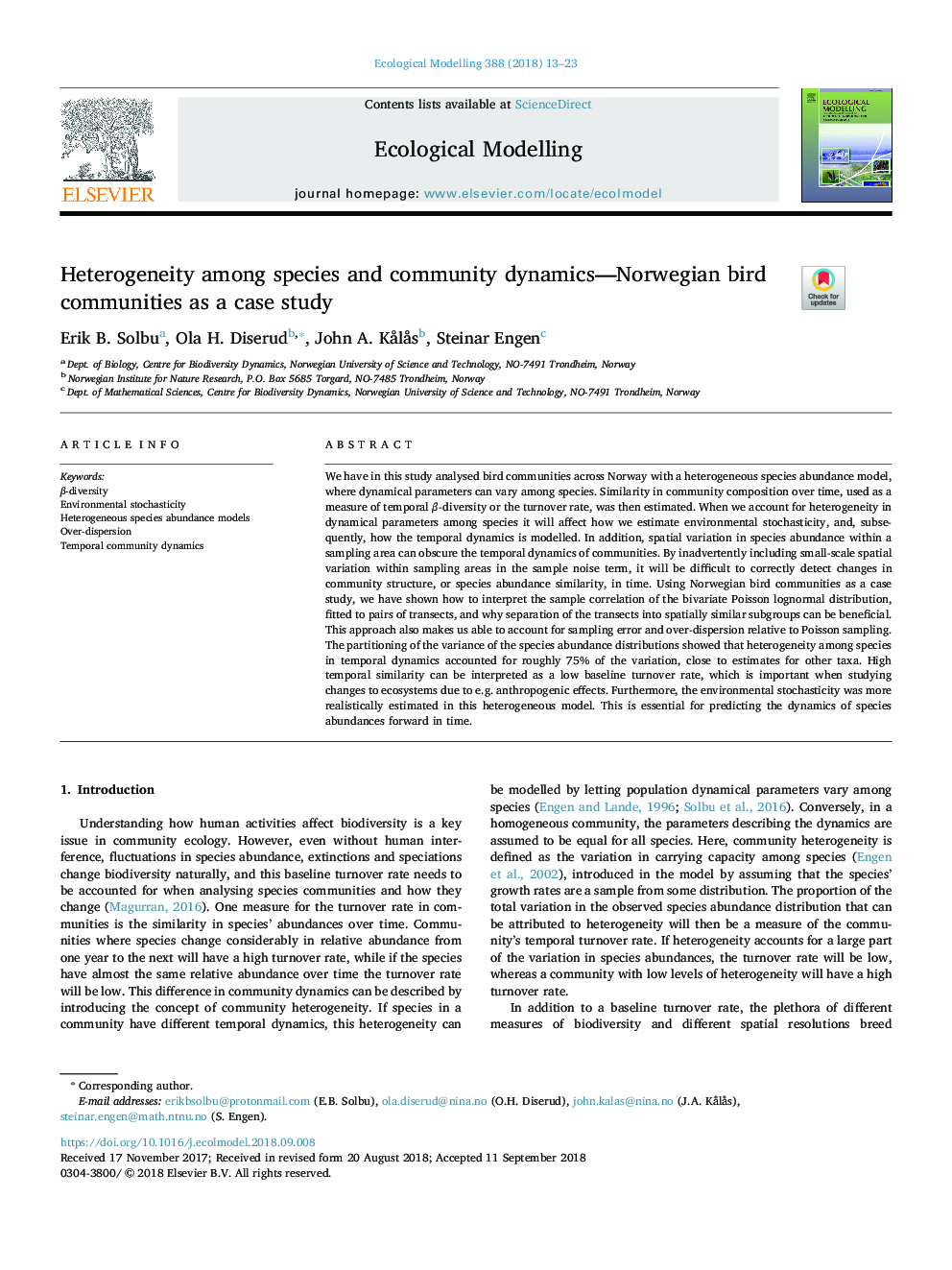| Article ID | Journal | Published Year | Pages | File Type |
|---|---|---|---|---|
| 11021788 | Ecological Modelling | 2018 | 11 Pages |
Abstract
We have in this study analysed bird communities across Norway with a heterogeneous species abundance model, where dynamical parameters can vary among species. Similarity in community composition over time, used as a measure of temporal β-diversity or the turnover rate, was then estimated. When we account for heterogeneity in dynamical parameters among species it will affect how we estimate environmental stochasticity, and, subsequently, how the temporal dynamics is modelled. In addition, spatial variation in species abundance within a sampling area can obscure the temporal dynamics of communities. By inadvertently including small-scale spatial variation within sampling areas in the sample noise term, it will be difficult to correctly detect changes in community structure, or species abundance similarity, in time. Using Norwegian bird communities as a case study, we have shown how to interpret the sample correlation of the bivariate Poisson lognormal distribution, fitted to pairs of transects, and why separation of the transects into spatially similar subgroups can be beneficial. This approach also makes us able to account for sampling error and over-dispersion relative to Poisson sampling. The partitioning of the variance of the species abundance distributions showed that heterogeneity among species in temporal dynamics accounted for roughly 75% of the variation, close to estimates for other taxa. High temporal similarity can be interpreted as a low baseline turnover rate, which is important when studying changes to ecosystems due to e.g. anthropogenic effects. Furthermore, the environmental stochasticity was more realistically estimated in this heterogeneous model. This is essential for predicting the dynamics of species abundances forward in time.
Related Topics
Life Sciences
Agricultural and Biological Sciences
Ecology, Evolution, Behavior and Systematics
Authors
Erik B. Solbu, Ola H. Diserud, John A. Kålås, Steinar Engen,
